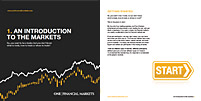

Asia FX muted, dollar near 7-mth low after soft CPI data
Investing.com-- Most Asian currencies kept to a tight range on Thursday after clocking strong overnight gains as U.S. consumer inflation data read softer than expected and put the dollar close to a seven-month low.
Sentiment towards regional markets was also aided by positive economic readings from Japan, Australia and to some extent, China.
The dollar index and dollar index futures hovered around the mid-102 level in Asian trade, remaining close to a seven-month low.
Consumer price index data on Wednesday read a touch lower than expected, ramping up bets on a September rate cut. But traders grew more biased towards a 25 basis point cut over a 50 bps cut, as the CPI data still clocked a month-on-month increase.
This notion limited gains in most Asian currencies, although broader risk-driven markets, particularly stocks, rose sharply.
Japanese yen steady as Q2 GDP beats expectations
The Japanese yen steadied on Thursday after a middling performance in overnight trade, as improved risk sentiment sapped safe haven demand for the currency. The USDJPY pair hovered around 147.25 yen.
Gross domestic product data showed Japan’s economy grew more than expected in the second quarter, aided by a rebound in private consumption as Japanese wages grew.
The reading tied into the Bank of Japan’s outlook that improved wages will boost the Japanese economy, giving the central bank more headroom to keep raising interest rates this year.
Such a scenario heralds more strength in the yen, which was already sitting on a stellar rally against the dollar over the past month.
Chinese yuan weakens amid mixed economic signals
The Chinese yuan weakened on Thursday, with the USDCNY pair rising 0.2% as a swathe of readings presented a mixed picture of the Chinese economy.
Chinese retail sales grew more than expected, inspiring some confidence in improving consumer spending and inflation.
But industrial production grew less than expected, as did fixed asset investment. China’s unemployment rate also unexpectedly rose to 4.2%.
The readings showed that while some policy measures from Beijing were aiding consumer spending, the overall economy still remained under pressure.
Australian dollar rises on strong jobs data
The Australian dollar was the best performer in Asia, with the AUDUSD pair rising 0.5% after data showed outsized growth in the jobs market for a second consecutive month in July.
The reading indicated that Australia’s labor market was running hot despite a broader softening in the economy, potentially underpinning inflation and giving the Reserve Bank of Australia more headroom to keep interest rates high.
Traders speculated that the RBA could even hike interest rates further to cool the labor sector, after Governor Michele Bullock warned last week that the central bank was open to raising rates further to combat sticky inflation.
Broader Asian currencies were muted amid market holidays in South Korea and India.
Begin trading today! Create an account by completing our form
Privacy Notice
At One Financial Markets we are committed to safeguarding your privacy.
Please see our Privacy Policy for details about what information is collected from you and why it is collected. We do not sell your information or use it other than as described in the Policy.
Please note that it is in our legitimate business interest to send you certain marketing emails from time to time. However, if you would prefer not to receive these you can opt-out by ticking the box below.
Alternatively, you can use the unsubscribe link at the bottom of the Demo account confirmation email or any subsequent emails we send.
By completing the form and downloading the platform you agree with the use of your personal information as detailed in the Policy.






